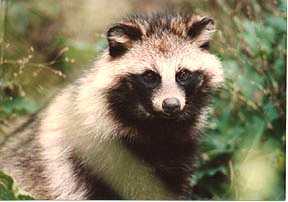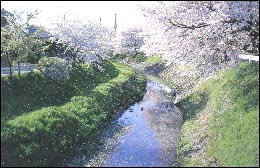Totoro
Totoro is one of Hayao Miyazaki's better known films in North America. It was picked by Roger Ebert as one of the "five best movies for kids." This success is tempered by the fact its existence barely registers with mainstream movie watchers in North America.
Totoro is nostalgic story set in the 1950s. The movie starts with the main characters, Mei and Satsuki, moving into the countryside around Tokyo together with their father. Mei and Satsuki's father works in Tokyo as a archaeology professor. The reason for this move is simple: Their mother is suffering from tuberculosis and receiving treatment at the nearby Shichikokuyama hospital.
The pair is quick to explore their exquisitely crafted surroundings. In watching the movie you are drawn into the world as seen by the children. Mei, the younger sister is the first to discover the forest spirit Totoro living in the towering camphor near their new house. Satsuki later learns Mei wasn't kidding about Totoro in the infamous bus stop scene. A setback in their mother's recovery sets off a sequence of events were Mei becomes lost trying to reach her mother by herself and only Totoro can help Satsuki find her.
Tokorozawa City, the setting of the film, is shown in the movie as a lush forested farmland. Today, it is a suburb of Tokyo and is where the director, Hayao Miyazaki, lives. Miyazaki's mother was also sick with tuberculosis in his own childhood which makes this film (minus the two girls and Totoro) somewhat autobiographical.

Many portions of the film are steeped in Shintoism. Totoro (a made up creature) that Mei and later Satsuki meet is a Shinto forest spirit. Totoro and the other forest spirits in the movie can only be seen by children. He is more or less an oversized japanese raccoon or tanuki with owl-like features. The cat bus is just plain weird.
Totoro's tree has a Shimenawa to signify the tree the tree as sacred and prevent unpure things from approaching. 'Shime' means taboo in Japanese. The family shows their respect after Mei discovers Totoro by bowing and thanking the forest spirit for looking after Mei.
Japan's other major religion, Buddhism, plays a role as well. The Ojizou-sama statue that Mei and Satsuki stop at in the rain are part of Japanese Buddhism and are usually made as a memorial to a child who dies. They are placed alongside roads to wish for the safety of travellers. When Mei is lost later in the film she sits next to a row of these statues. This is a symbolic way of saying that she is being watched over and is safe. At the same time, the cat bus is barrelling down the high-voltage transmission wires towards her reinforcing this.
Note: The mixing of Shintoism and Buddhism in is quite common in Japan. A funeral, for instance, is generally a buddhist ceremony regardless of whether the person was a Buddhist. Shintoism views death as a contamination and untouchable. The two religions have come to complement each other nicely in Japan.
While Totoro didn't break even in 1988 with its theatrical release it has become a well cherished film in Japan. Its setting and theme struck a cord with many people in Japan as it shows the simpler rural life they once lived. This contrasts sharply against the modern and complicated life many Japanese people live. The lush undisturbed setting is very nostalgic. Concrete barriers to protect people from landslide littered against the landscape in today's Japan.
So from the imagination of the master animator's pen came a powerful statement about what was lost in the modernization of Japan. Many of Miyazaki's other films like Princesses Mononoke and Nausicaa also have environmentalist and naturalist themes.
To many the film has become a symbol of "what once was". A group in Tokorozawa called the "Totoro no Furusato (Totoro's Home) National Trust Movement" uses Totoro as their mascot for their work preserving what is left of the local rural setting. Miyazaki has donated a considerable amount in money and art to the cause.
While this film has been somewhat successful in North America it highlights for me some of the problems Japanese films have breaking into this market. Without the cultural background that is assumed for a Japanese audience much of the meaning of a film can be lost. One can't blame the audience for this problem. In my opinion, importers of Japanese movies could do a much better job of educating the audience of the background they're missing.
I'd like give a special thanks to nausicaa.net where I got most of the above facts.
Ghibli Commentary
North American Distribution
Happily, this film can be found dubbed in any (decent) video store.
See Also: Satsuki and Mei's House (Aichi Prefecture)
Back: Nausicaa / Next: Princess Mononoke (1997)

